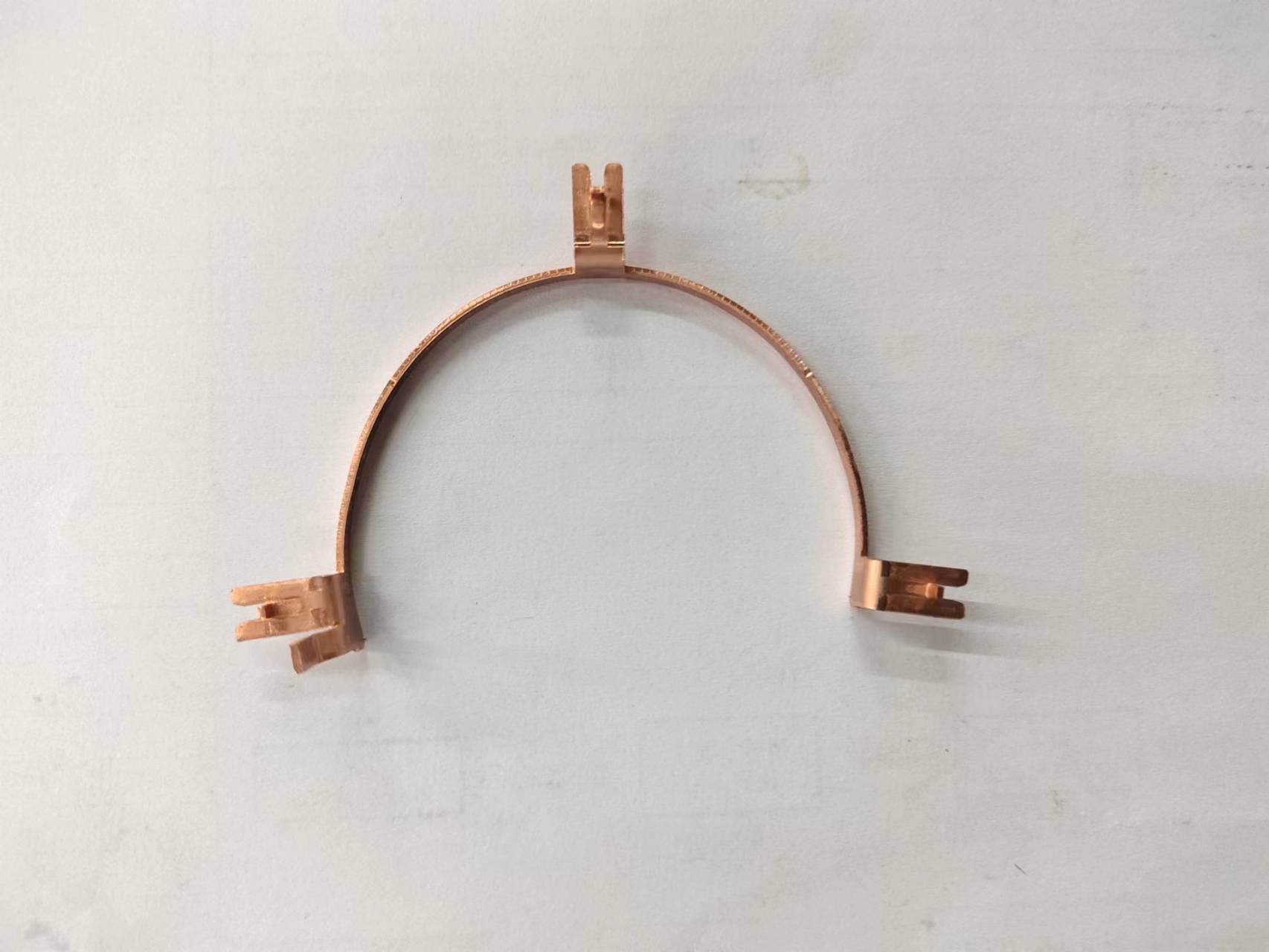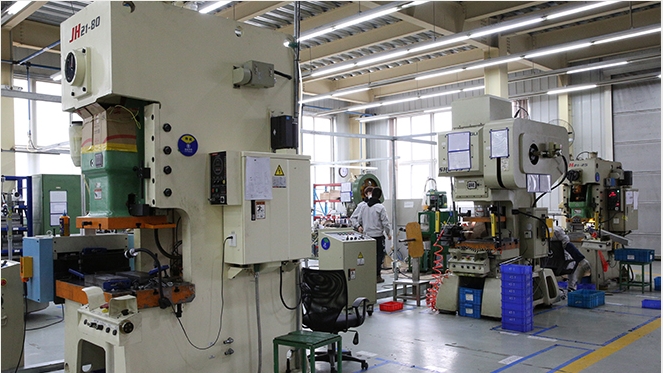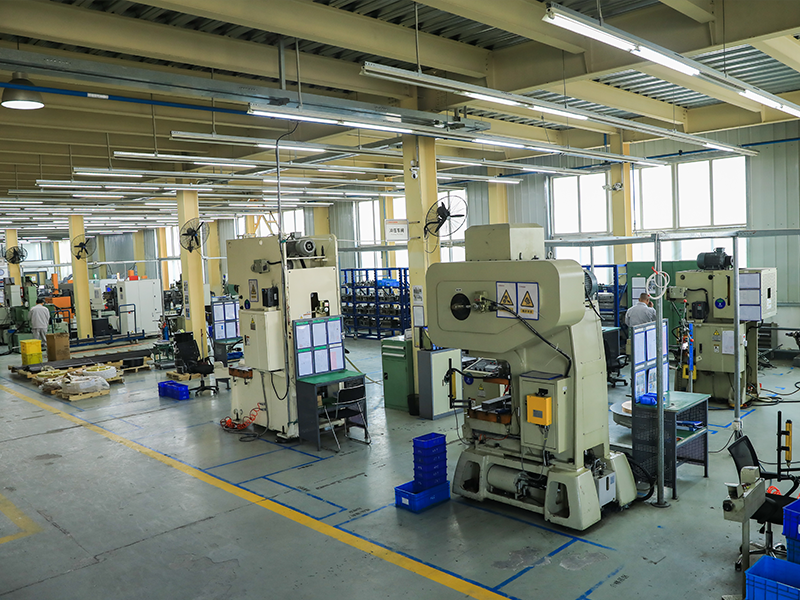

Stamping parts processing burr removal tips
Release time:2024-02-07
In the world of metalworking, the production of stamped parts is a precise and critical art. Each stamping is a challenge to the metal, a shaping and a metamorphosis. However, the process often doesn't go smoothly and it leaves a mark that cannot be ignored - burrs. These tiny but tenacious imperfections, like smudges on an artist's painting, need to be carefully removed to reveal the work in its true splendour.
Burrs, an unavoidable product of stamped parts processing, not only affect the aesthetic appearance, but also a hidden quality problem. They are as sharp as knives, and if left untreated, they are enough to cut the operator's hand and even affect the function and life of the part. Therefore, removing burrs has become an important step in improving the quality of stamped parts.

In this article, I'll share with you a few great tips on methods that not only effectively remove burrs from stamped parts, but also ensure the integrity and accuracy of the part.
Firstly, let's talk about the grinding method. This is a traditional yet effective method of removing burrs by hand through the use of sandpaper, grinding stones, or abrasive belts. Although this method is time-consuming and labour-intensive, it is very effective for working with complex shapes or hard-to-reach areas. Grinding should be gentle and tactful, like a sculptor carving his work, with each touch precise and delicate.
Next is the vibration method. The stamped part is put into a vibrating drum with abrasive material, and through high-frequency vibration, the abrasive material collides with the burr, thus removing the burr. This method is suitable for batch processing with high efficiency, but attention needs to be paid to the vibration time and the choice of abrasives to avoid excessive wear of the parts.

Electrochemical deburring technology is a more advanced method. It uses an electric current to dissolve the burr as an anode in a specific electrolyte. This method is environmentally friendly and maintains the exact dimensions of the part, but the equipment costs are high and it is suitable for applications where precision is critical.
Finally, we have the heat treatment method. By annealing or normalising a stamped part, the metal tissue can be softened and the burr then becomes easy to remove. This method not only removes burrs but also improves the properties of the material, but it may change the hardness and dimensions of the part, so it needs to be used with caution.
Each method has its own unique advantages and limitations, and which one to choose depends on the material, shape, quantity, and end use of the part. And in the process of choosing, we need to be as responsible as an artist for our work and strive for perfection in every detail.

Deburring is not just a technical operation, it is a respect for craftsmanship and the pursuit of quality. When we polish each stamping with all our heart, we are not only removing the defects, but also giving them a new life, so that they are in the most perfect posture, to show on the stage of the world.
So, next time you are faced with those stampings with burrs, try these great tips to give your workpiece the shine it deserves. Remember, every deburring success is a tribute to the aesthetics of craftsmanship and a practice of excellence in craftsmanship.
Burrs, an unavoidable product of stamped parts processing, not only affect the aesthetic appearance, but also a hidden quality problem. They are as sharp as knives, and if left untreated, they are enough to cut the operator's hand and even affect the function and life of the part. Therefore, removing burrs has become an important step in improving the quality of stamped parts.

In this article, I'll share with you a few great tips on methods that not only effectively remove burrs from stamped parts, but also ensure the integrity and accuracy of the part.
Firstly, let's talk about the grinding method. This is a traditional yet effective method of removing burrs by hand through the use of sandpaper, grinding stones, or abrasive belts. Although this method is time-consuming and labour-intensive, it is very effective for working with complex shapes or hard-to-reach areas. Grinding should be gentle and tactful, like a sculptor carving his work, with each touch precise and delicate.
Next is the vibration method. The stamped part is put into a vibrating drum with abrasive material, and through high-frequency vibration, the abrasive material collides with the burr, thus removing the burr. This method is suitable for batch processing with high efficiency, but attention needs to be paid to the vibration time and the choice of abrasives to avoid excessive wear of the parts.

Electrochemical deburring technology is a more advanced method. It uses an electric current to dissolve the burr as an anode in a specific electrolyte. This method is environmentally friendly and maintains the exact dimensions of the part, but the equipment costs are high and it is suitable for applications where precision is critical.
Finally, we have the heat treatment method. By annealing or normalising a stamped part, the metal tissue can be softened and the burr then becomes easy to remove. This method not only removes burrs but also improves the properties of the material, but it may change the hardness and dimensions of the part, so it needs to be used with caution.
Each method has its own unique advantages and limitations, and which one to choose depends on the material, shape, quantity, and end use of the part. And in the process of choosing, we need to be as responsible as an artist for our work and strive for perfection in every detail.

Deburring is not just a technical operation, it is a respect for craftsmanship and the pursuit of quality. When we polish each stamping with all our heart, we are not only removing the defects, but also giving them a new life, so that they are in the most perfect posture, to show on the stage of the world.
So, next time you are faced with those stampings with burrs, try these great tips to give your workpiece the shine it deserves. Remember, every deburring success is a tribute to the aesthetics of craftsmanship and a practice of excellence in craftsmanship.
